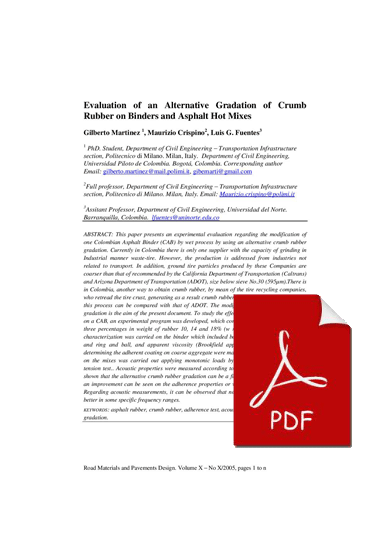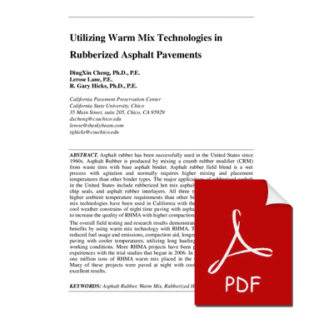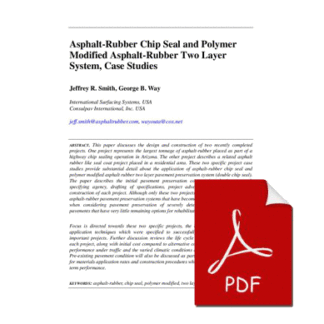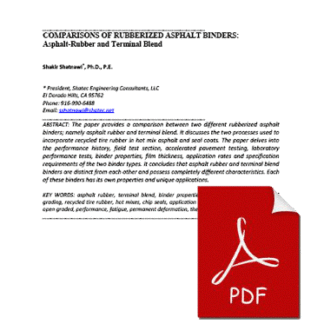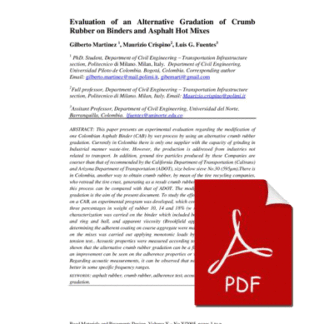Description
This paper presents an experimental evaluation regarding the modification of one Colombian Asphalt Binder (CAB) by wet process by using an alternative crumb rubber gradation. Currently in Colombia there is only one supplier with the capacity of grinding in Industrial manner waste-tire. However, the production is addressed from industries not related to transport. In addition, ground tire particles produced by these Companies are coarser than that of recommended by the California Department of Transportation (Caltrans) and Arizona Department of Transportation (ADOT), size below sieve No.30 (595ìm).There is in Colombia, another way to obtain crumb rubber, by mean of the tire recycling companies, who retread the tire crust, generating as a result crumb rubber. The gradation obtained after this process can be compared with that of ADOT. The modification of one CAB with this gradation is the aim of the present document. To study the effect of this alternative gradation on a CAB, an experimental program was developed, which consisted of adding to the binder, three percentages in weight of rubber 10, 14 and 18% (w rubber/ w binder). A physical characterization was carried on the binder which included basic tests such as: penetration and ring and ball, and apparent viscosity (Brookfield apparatus.) Adherence tests for determining the adherent coating on coarse aggregate were made. The mechanical evaluation on the mixes was carried out applying monotonic loads by means of Marshall, indirect tension test.. Acoustic properties were measured according to the ISO 10534-2. The results shown that the alternative crumb rubber gradation can be a fine option to modify CAB, also an improvement can be seen on the adherence properties or water susceptibility resistance. Regarding acoustic measurements, it can be observed that noise absorption is significantly better in some specific frequency ranges.

